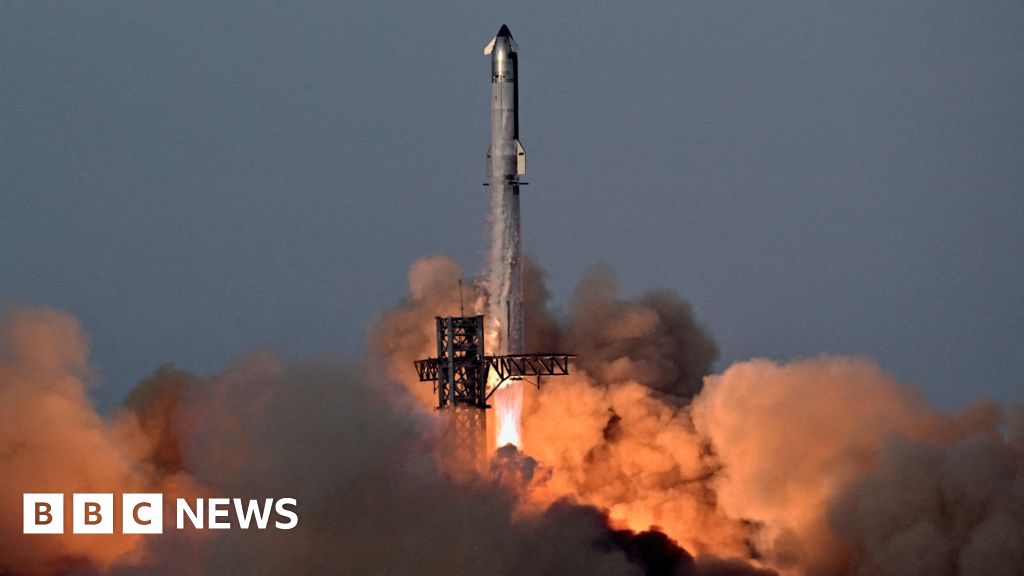SpaceX has pulled off a successful test flight of its newest generation rocket Starship, reversing a trend of disappointing failures.
The world’s largest and most powerful rocket blasted off from Texas just after 18:30 local time (23:30 BST) for a nail-biting 60-minute flight.
Parts of the engine appeared to explode at one stage, and flaps on the side of the rocket caught fire and swung from side-to-side.
US space agency Nasa plans to use Starship to send humans to the Moon for its Artemis programme in 2027.
“Great work by the SpaceX team!!”, posted SpaceX CEO Elon Musk on X.
He will be welcoming the success after three Starship launches ended in failure this year, and one rocket exploded on the launch pad in June.
Starship is the largest and most powerful rocket built to date. It is made up of a booster called Super Heavy and the spacecraft Starship.
The signs were positive from the start of Tuesday’s test flight. All of the booster’s 33 engines fired up, and after about seven minutes, the booster separated from the spacecraft and fell into the Gulf of Mexico.
Starship continued to ascend, reaching a maximum height of almost 200km above Earth, before coasting around the planet.
SpaceX said it intended to put the rocket under stress to test its limits, and parts of the rocket’s flaps appeared to burn and swing wildly during the descent.
The company has designed Starship to one day be a fully reusable transport system capable of carrying people to the Moon and Mars.
The first version of the rocket had five successful launches, but all attempts to launch the newest version had ended in spectacular explosions.
In March, one explosion grounded flights and caused debris to rain down over the Bahamas with pieces landing in the Turks and Caicos Islands in the Caribbean.
But SpaceX did successfully execute the “chopstick” manoeuvre that caught the rocket booster in mechanical arms when it returned to Earth.
And in June, a Starship rocket exploded on the launch pad in Texas when preparing for a test flight.
It is high stakes for US space agency Nasa, too. It has contracted SpaceX to use a modified version of Starship to take humans to the Moon as part its Artemis programme in 2027, although most observers say that date is almost certain to slip.
Mr Musk wants Starship to be certified for human travel as early as next year, and has also suggested it will start un-crewed flights to Mars in the next 12 months.
SpaceX’s mantra has been to fail fast, learn fast. Rather than taking a cautious approach, it has always aimed to move quickly and when rockets have exploded, the company says it is simply a chance to collect performance data.
But after three failures in a row this year, questions were being asked about the future of SpaceX and about whether Mr Musk had been spending too much time on US politics.
The world’s richest man was a key supporter of US President Donald Trump in the 2024 election campaign, and until a falling out in June, the two men were close allies.
Starship returned to Earth battered and bruised on Tuesday but it was a big step forward for the company that needs to prove it can safely and reliably take humans to the Moon.







